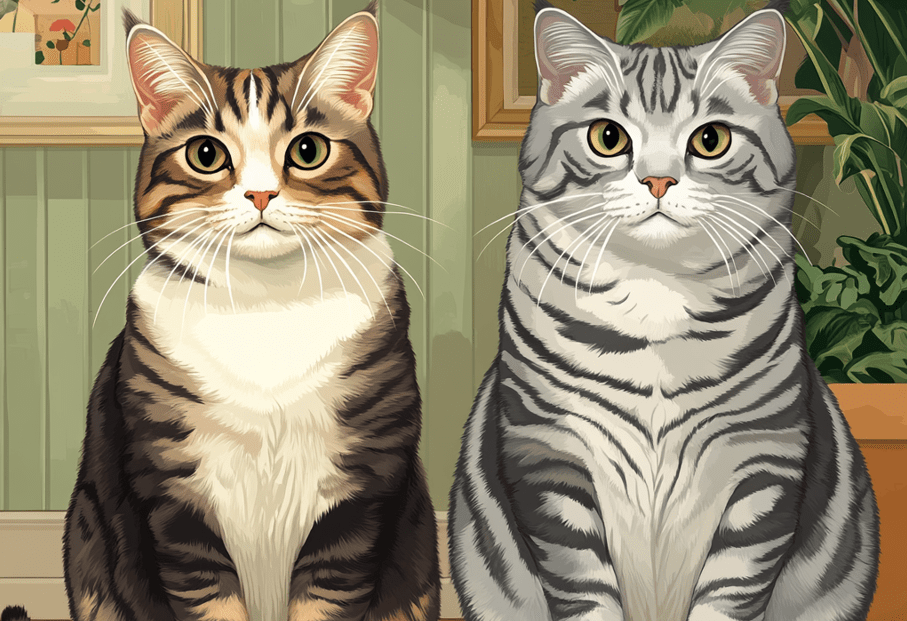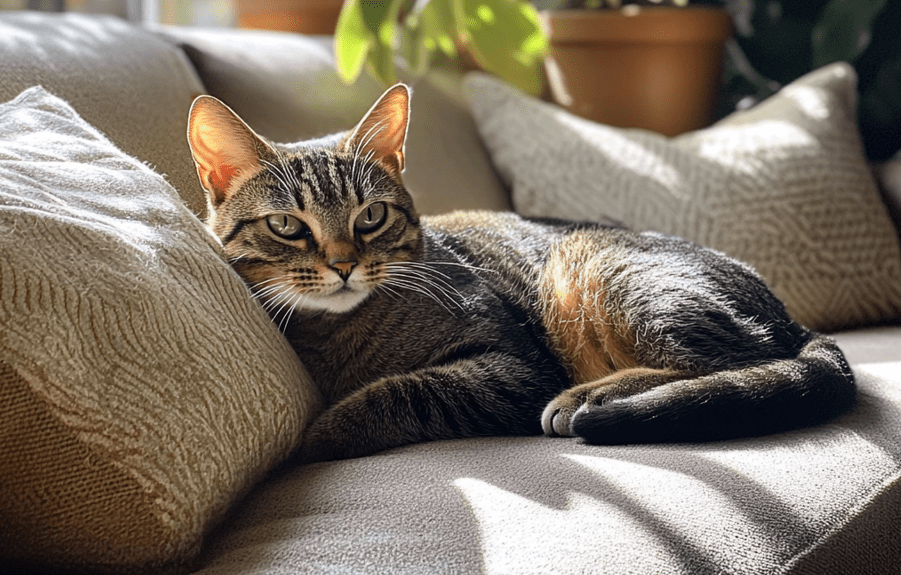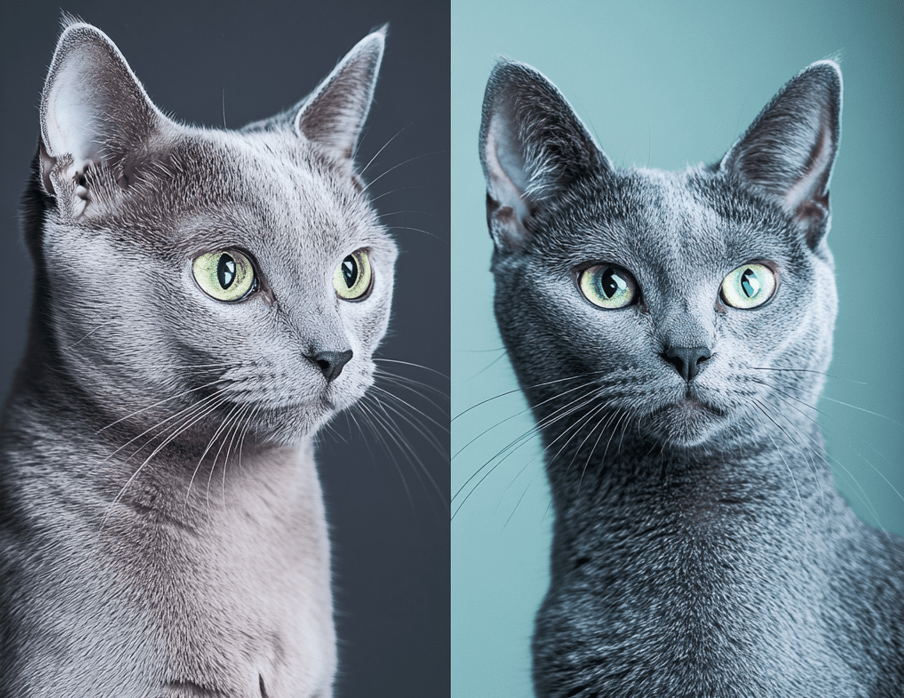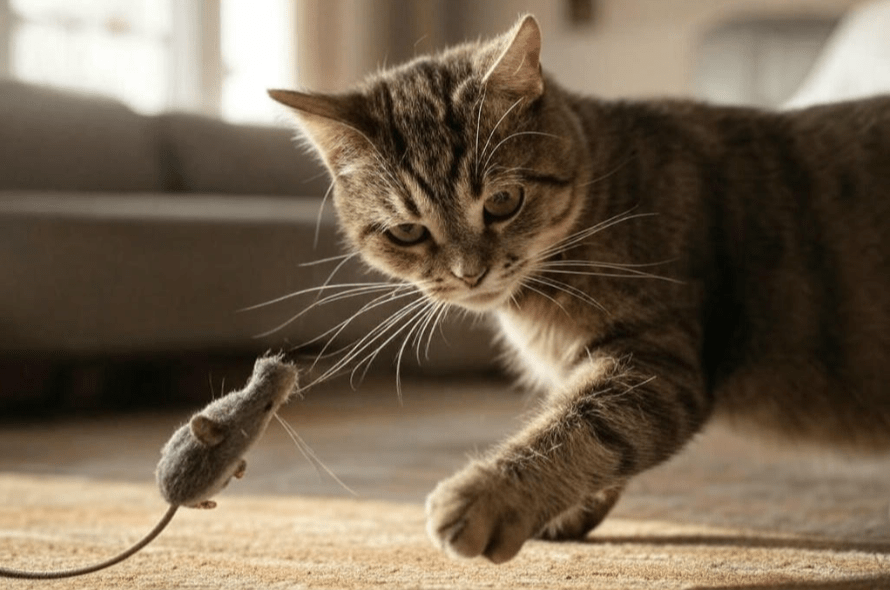
If you share your home with a Domestic Shorthair cat, you’ve likely noticed their knack for turning your furniture into a scratching post. This beloved breed, known for its playful personality and sleek coat, often leaves claw marks on sofas, chairs, and tables, causing frustration for pet owners. Scratching is a natural behavior for Domestic Shorthair cats, but understanding why they do it and how to redirect this instinct can save your furniture and strengthen your bond with your feline friend. In this comprehensive guide, we’ll explore the reasons behind furniture scratching and provide practical, effective solutions to stop it.
Understanding Why Domestic Shorthair Cats Scratch Furniture
Scratching is an instinctive behavior for all cats, including Domestic Shorthairs. To address the issue, it’s essential to understand the underlying reasons for this behavior. Let’s dive into the primary motivations.
1. Natural Instinct to Mark Territory
Domestic Shorthair cats scratch to leave both visual and scent markers. Their paws contain scent glands that release pheromones when they scratch, signaling to other animals that this space is theirs. Furniture, especially in high-traffic areas, becomes a prime target for this territorial communication.
2. Claw Maintenance
Scratching helps cats shed the outer layers of their claws, keeping them sharp and healthy. For a Domestic Shorthair, whose ancestors relied on sharp claws for hunting and defense, this is a hardwired habit. Your couch might just seem like the perfect surface for a claw-sharpening session.
3. Exercise and Stretching
Scratching allows cats to stretch their muscles and maintain flexibility. Domestic Shorthairs are active and agile, and scratching provides a way to engage their shoulders, back, and legs. Furniture often appeals because it’s sturdy and tall enough for a satisfying stretch.
4. Emotional Expression
Cats may scratch to express emotions like stress, boredom, or excitement. A Domestic Shorthair cat might take out frustration on your armchair if they’re feeling neglected or understimulated. Changes in the household, like new pets or rearranged furniture, can also trigger stress-related scratching.
5. Attention-Seeking Behavior
Some Domestic Shorthairs learn that scratching furniture gets a reaction from their owners—whether it’s yelling or chasing. If your cat feels ignored, they might scratch to grab your attention, even if the response is negative.
The Impact of Scratching on Your Home and Cat
While scratching is normal for Domestic Shorthair cats, it can create challenges for pet owners. Damaged furniture not only looks unsightly but can also be costly to repair or replace. Additionally, if scratching is a sign of stress or boredom, ignoring it could affect your cat’s well-being. Addressing the behavior early ensures a happier cat and a more harmonious home.
How to Stop Your Domestic Shorthair from Scratching Furniture
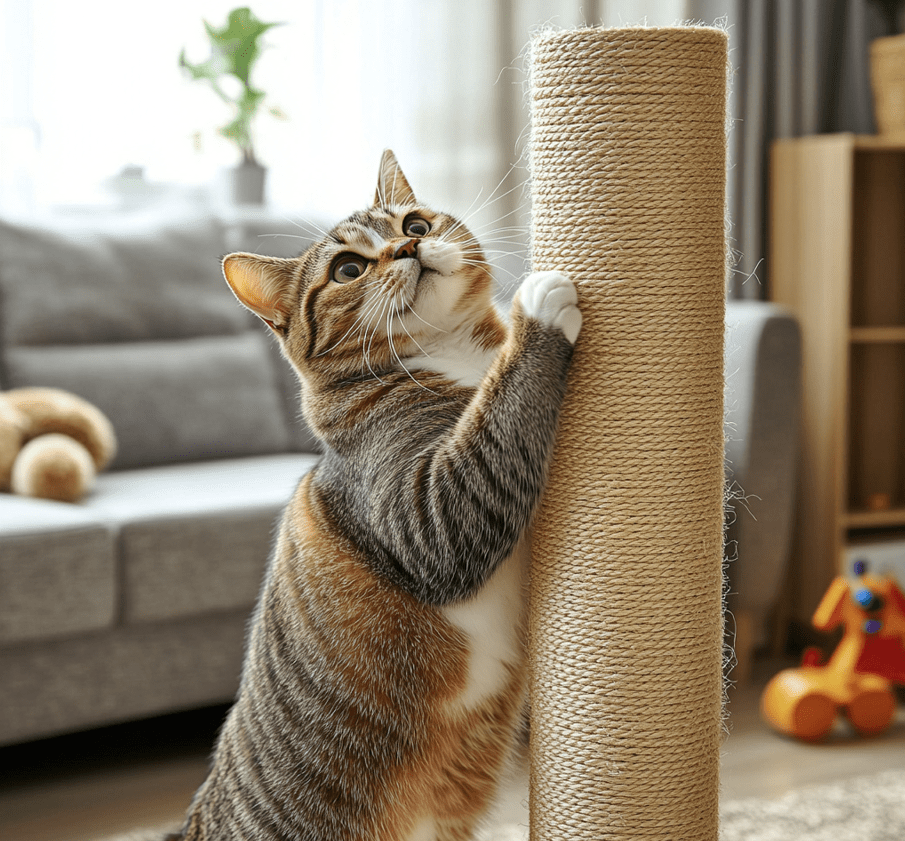
Now that we understand why Domestic Shorthairs scratch, let’s explore actionable strategies to redirect this behavior. These solutions focus on meeting your cat’s needs while protecting your home.
1. Provide Appropriate Scratching Surfaces
The most effective way to stop furniture scratching is to offer appealing alternatives. Scratching posts and pads are designed to satisfy your Domestic Shorthair’s instincts. Here’s how to choose and use them:
Variety of Textures: Domestic Shorthairs have individual preferences. Offer posts made of sisal, cardboard, or carpet to see what your cat likes best.
Height and Stability: Choose a tall, sturdy scratching post that allows your cat to stretch fully. A wobbly post won’t be used.
Strategic Placement: Place scratching posts near furniture your cat targets or in areas where they spend time, like near windows or sleeping spots.
Encourage Use: Rub catnip on the post, dangle toys, or gently guide your cat’s paws to the surface to spark interest.
2. Make Furniture Less Appealing
If your Domestic Shorthair keeps scratching the same chair, make it less inviting. Here are some humane deterrents:
Double-Sided Tape: Cats dislike sticky surfaces. Apply double-sided tape or products like Sticky Paws to furniture.
Aluminum Foil: Cover targeted areas with foil, which cats often find unpleasant to touch.
Scent Deterrents: Use citrus-scented sprays or essential oil blends (safe for cats) to repel your Domestic Shorthair. Always check with a vet before using scents.
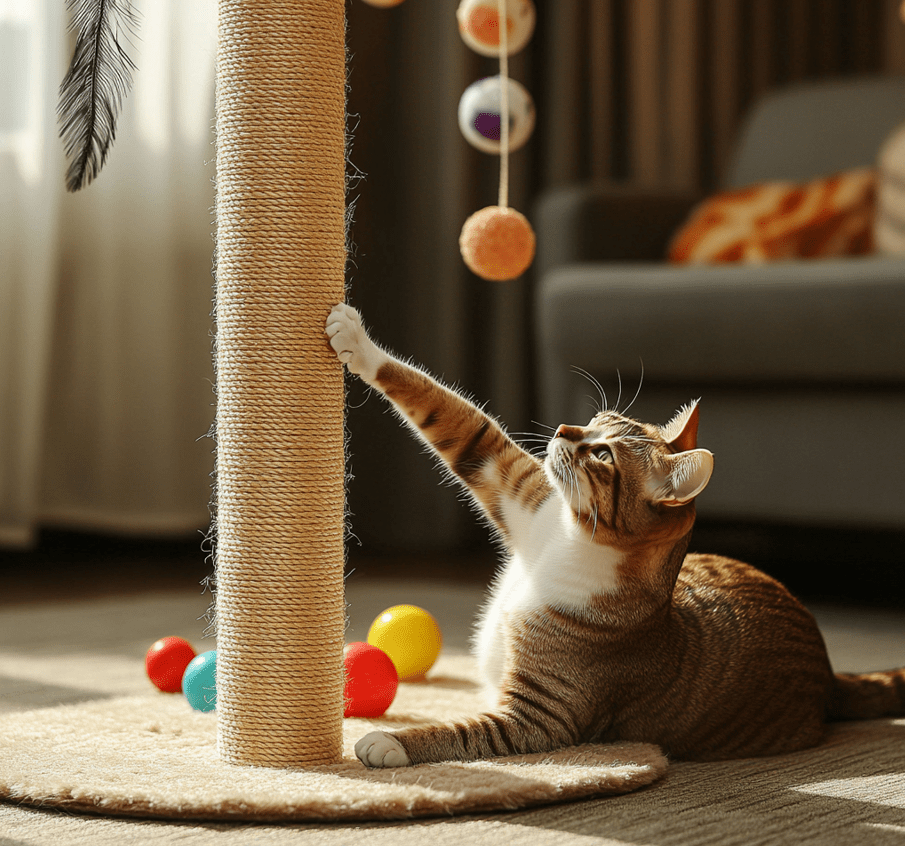
Furniture Covers: Use washable slipcovers or throws to protect furniture while training your cat.
3. Trim Your Cat’s Claws Regularly
Regular claw trimming reduces the damage caused by scratching and makes furniture less appealing. For Domestic Shorthairs:
Use Proper Tools: Invest in cat-specific nail clippers or a grinding tool.
Trim Gradually: Clip small amounts to avoid the quick (the pink part of the nail containing nerves and blood vessels).
Make It Positive: Reward your cat with treats and praise during and after trimming to build trust.
If you’re unsure how to trim claws, ask your vet or a groomer for a demonstration. Aim to trim every 2-3 weeks.
4. Enrich Your Cat’s Environment
A bored or understimulated Domestic Shorthair is more likely to scratch furniture. Enrichment keeps your cat mentally and physically engaged. Try these ideas:
Interactive Toys: Feather wands, laser pointers, and puzzle feeders stimulate your cat’s hunting instincts.
Vertical Spaces: Cat trees, shelves, or window perches give Domestic Shorthairs places to climb and observe.
Playtime: Spend at least 15-20 minutes daily playing with your cat to burn energy and reduce stress.
Rotate Toys: Keep things fresh by swapping out toys regularly to maintain your cat’s interest.
5. Address Stress and Anxiety
If your Domestic Shorthair’s scratching seems linked to stress, identify and address the cause. Common triggers include:
Household Changes: New pets, babies, or rearranged furniture can unsettle your cat. Introduce changes gradually.
Lack of Routine: Cats thrive on predictability. Maintain consistent feeding, play, and cuddle times.
Health Issues: Pain or discomfort from conditions like arthritis or dental problems can lead to stress scratching. Schedule a vet checkup if scratching is sudden or excessive.
Pheromone diffusers like Feliway can also calm your Domestic Shorthair, making them less likely to scratch out of anxiety.
6. Positive Reinforcement
Reward your Domestic Shorthair for using scratching posts instead of furniture. When they scratch the right surface:
1.Offer treats, praise, or petting.
2.Use a cheerful tone to reinforce the behavior.
3.Avoid punishing furniture scratching, as it can confuse or stress your cat.
Consistency is key. Over time, your Domestic Shorthair will associate scratching posts with positive outcomes.
7. Consider Claw Caps
For persistent scratchers, claw caps (like Soft Paws) are a safe, temporary solution. These plastic covers glue onto your cat’s claws, preventing damage while allowing normal scratching behavior. Consult your vet for proper application and replacement every 4-6 weeks.
Common Mistakes to Avoid
When addressing furniture scratching, pet owners sometimes make errors that hinder progress. Here’s what to avoid:
Declawing: This invasive surgery removes part of a cat’s toes and can cause pain, behavioral issues, and health problems. It’s not a humane solution for Domestic Shorthairs.
Inconsistent Training: If you allow scratching sometimes but not others, your cat will get confused. Be consistent with deterrents and rewards.
Ignoring Underlying Issues: Excessive scratching can signal medical or emotional problems. Don’t assume it’s just a bad habit.
Choosing the Wrong Scratching Post: A small, unstable, or unappealing post won’t attract your Domestic Shorthair. Invest in quality options.
When to Seek Professional Help
If you’ve tried everything and your Domestic Shorthair still scratches furniture excessively, it’s time to seek help. Consider:
Veterinarian: Rule out medical issues like allergies, infections, or pain that could cause scratching.
Cat Behaviorist: A certified feline behavior consultant can assess your home and cat’s habits to create a tailored plan.

Trainer: Some trainers specialize in redirecting unwanted cat behaviors.
Creating a Cat-Friendly Home for Your Domestic Shorthair
Preventing furniture scratching goes beyond quick fixes—it’s about building an environment where your Domestic Shorthair thrives. Here are long-term strategies:
Designated Cat Zones: Set up areas with scratching posts, beds, and toys where your cat feels safe and engaged.
Safe Spaces: Ensure your Domestic Shorthair has quiet spots to retreat during stressful times, like a cozy nook or covered bed.
Regular Interaction: Domestic Shorthairs are social and need quality time with you to feel secure and content.
Clean Litter Boxes: A dirty litter box can stress your cat, leading to scratching. Scoop daily and clean thoroughly weekly.
Fun Facts About Domestic Shorthair Cats
To appreciate your Domestic Shorthair even more, here are some tidbits about this wonderful breed:
Diverse Coats: Domestic Shorthairs come in countless colors and patterns, from tabby to tortoiseshell.
Resilient and Adaptable: Their mixed ancestry makes them hardy and versatile, thriving in various environments.
Long Lifespan: With proper care, Domestic Shorthairs often live 12-20 years, giving you years to perfect their scratching habits!
Conclusion

Your Domestic Shorthair cat’s furniture scratching may feel like a challenge, but it’s a natural behavior that can be redirected with understanding and effort. By providing appropriate scratching surfaces, enriching their environment, and using positive reinforcement, you can protect your home while keeping your cat happy and healthy. Domestic Shorthairs are intelligent, affectionate companions, and with the right approach, you can channel their instincts into behaviors that work for both of you.
Start implementing these strategies today, and you’ll soon enjoy a scratch-free home and a stronger bond with your Domestic Shorthair. If you have questions or need personalized advice, consult your vet or a cat behaviorist—they’re there to help you and your feline friend thrive.

